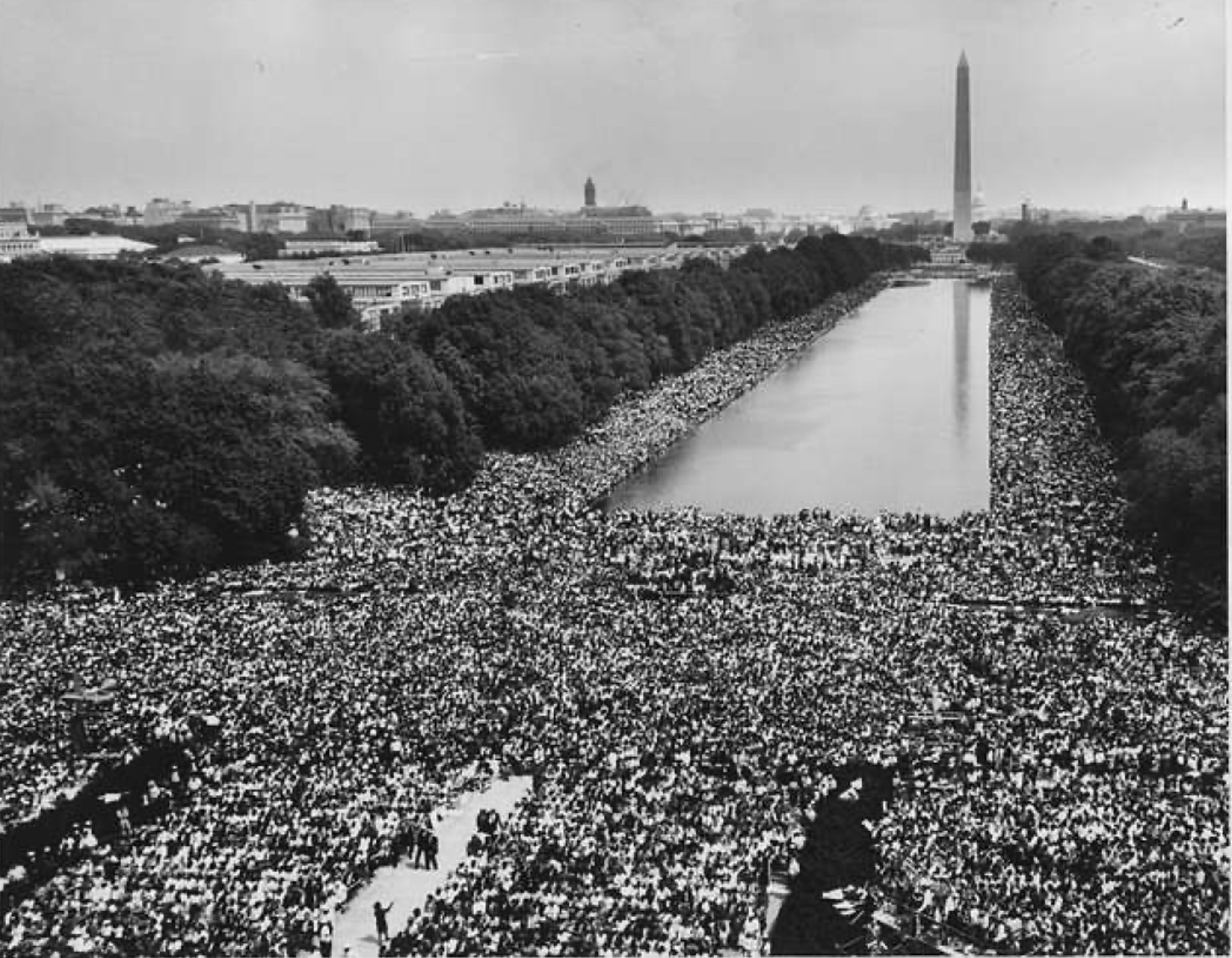
George H.W. Bush Signed the Americans With Disabilities Act Into Law On This Date
How do you feel about the Americans With Disabilities Act on its anniversary?
On July 26, 1990 President George H.W. Bush signed the Americans with Disabilities Act (ADA) into law, which extended civil rights protections to people with disabilities and looked to prevent discrimination against the disabled in the workplace and in public places. The ADA covers both mental and physical disabilities, and requires employers to provide reasonable accommodations to disabled employees.
Why was it needed?
While the Civil Rights Act of 1964 prohibited discrimination on the basis of race, religion, sex, or national origin — it didn’t establish similar protections for people with disabilities. As a result, disabled people faced discrimination in the workforce without having recourse, and many public places lacked modifications that would’ve made them more accessible for disabled Americans.
Early versions of disability legislation were introduced in Congress in 1988 and 1989 and the idea began to gain bipartisan support. The arrival of George H.W. Bush in the White House, following his victory in the 1988 election, brought even more focus to the issue, as the Bush administration drafted its own proposals and worked with Congress to refine theirs.
What did it do?
The final version of the ADA made it illegal to discriminate against people with disabilities in the workforce, at public places (including government buildings, public transportation, schools, etc.) or businesses, and in telecommunications so that those with hearing and speech disabilities could use equivalent services.
Employers were required to make reasonable accommodations for disabled employees — meaning that aspects of their jobs would be changed to allow the person to perform in their role, such as schedule changes or providing special equipment to the worker. But businesses weren’t required to provide accommodations that would impose an undue hardship because of the difficulty or cost of the implementing those changes. The job of enforcing these requirements fell to the Equal Employment Opportunity Commision (EEOC), which had been created by the Civil Rights Act of 1964.
The ADA’s definition of public accommodations was written to include stores, schools, restaurants, healthcare facilities, hotels, and recreational venues — all of which were required by the bill to remove “architectural barriers” that impede disabled people’s access. It also provided protections for service animals and their handlers, while requiring that businesses allow them into their facility.
Telecommunications companies were required by the ADA to offer “functionally equivalent” services to disabled consumers like those with hearing or speech impairments. This led to the creation of several technologies that transcribe messages into text calls or video recordings.
What did Congress do?
Both chambers of Congress passed their own versions of the ADA with bipartisan support, but the bill went through conference committee to iron out the differences between the competing House and Senate bills. The day after the House agreed to the conference report on a 377-28 vote, now-retired Sen. Tom Harkin (D-IA) — the original sponsor of the ADA — gave the Senate’s first ever speech in American Sign Language so that his brother could understand him.
Ultimately, the Senate passed the conference report on a strong bipartisan vote of 91-6 which sent the legislation to President Bush’s desk to be signed into law. At the signing ceremony, Bush praised the efforts of disability rights activists, and remarked that he hoped the Americans with Disabilities Act becoming law would “let the shameful wall of exclusion finally come tumbling down.”
What has its impact been?
Since its enactment, the ADA has remained the most significant piece of disability legislation to become law. The law has triggered several significant Supreme Court decisions, including Bates v. UPS, which required the company to make accommodations for employees who are deaf or hard of hearing.
Since the ADA became law, the percentage of people with disabilities who are in the workforce has actually declined from 50 percent in 1991 to 41 percent in 2010, although some attribute this decline to the aging population. According to the 2010 Census, about 57 million Americans (or 19 percent of the U.S. population) have a disability, meaning that there are approximately 23 million disabled Americans in the workforce.
The ADA also got a recent makeover during the presidency of George W. Bush, who signed legislation expanding its protections into law in 2008. The update directed the EEOC to enforce a more lenient standard for assessing a person’s impairment and it also broadened the definition of “major life activities” used to determine disability to include many routine daily activities — which has allowed the ADA to protect more Americans.
― Eric Revell
(Photo Credit: White House / Public Domain)
The Latest
-
 Changes are almost here!It's almost time for Causes bold new look—and a bigger mission. We’ve reimagined the experience to better connect people with read more...
Changes are almost here!It's almost time for Causes bold new look—and a bigger mission. We’ve reimagined the experience to better connect people with read more... -
 The Long Arc: Taking Action in Times of Change“Change does not roll in on the wheels of inevitability, but comes through continuous struggle.” Martin Luther King Jr. Today in read more... Advocacy
The Long Arc: Taking Action in Times of Change“Change does not roll in on the wheels of inevitability, but comes through continuous struggle.” Martin Luther King Jr. Today in read more... Advocacy -
 Thousands Displaced as Climate Change Fuels Wildfire Catastrophe in Los AngelesIt's been a week of unprecedented destruction in Los Angeles. So far the Palisades, Eaton and other fires have burned 35,000 read more... Environment
Thousands Displaced as Climate Change Fuels Wildfire Catastrophe in Los AngelesIt's been a week of unprecedented destruction in Los Angeles. So far the Palisades, Eaton and other fires have burned 35,000 read more... Environment -
 Puberty, Privacy, and PolicyOn December 11, the Montana Supreme Court temporarily blocked SB99 , a law that sought to ban gender-affirming care for read more... Families
Puberty, Privacy, and PolicyOn December 11, the Montana Supreme Court temporarily blocked SB99 , a law that sought to ban gender-affirming care for read more... Families
 Climate & Consumption
Climate & Consumption
 Health & Hunger
Health & Hunger
 Politics & Policy
Politics & Policy
 Safety & Security
Safety & Security
